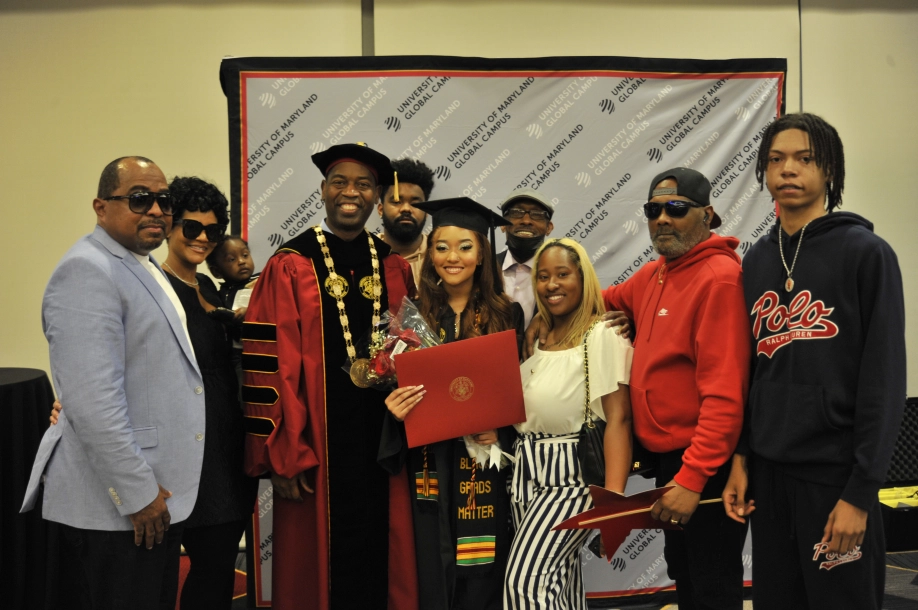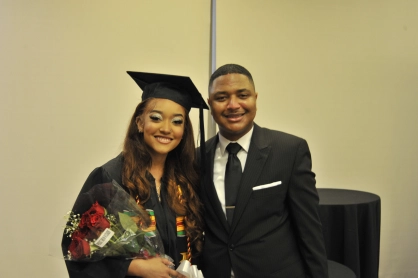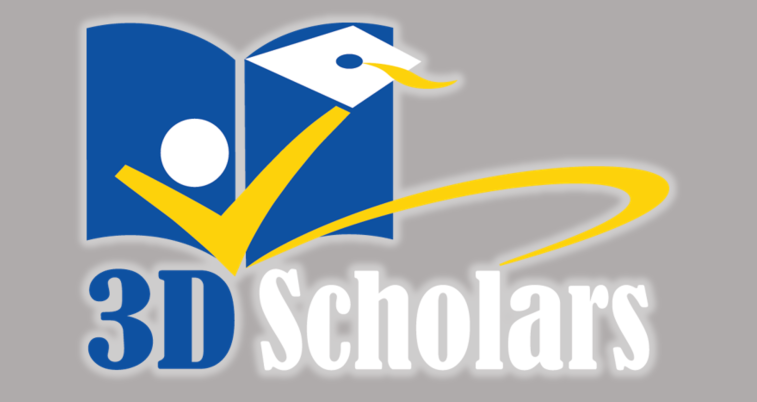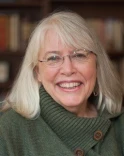First Graduates of UMGC-Prince George’s County 3D Scholars Program Collab. Venture Out Into the World

Your Path, Your Pace: First Graduates Show How Innovative Program Can Reshape Education
As Nailah Gibson looked forward to her May 2022 graduation from University of Maryland Global Campus (UMGC), she was debating whether to use her Bachelor of Science in Criminal Justice as the steppingstone to law school or to a career in law enforcement. For now, law school has the edge.
Gibson is 19—the age when many are just starting college—and she has already earned her high school diploma, associate degree and bachelor’s degree. If law school weren’t on her horizon, she’d be starting a career, building professional experience and accumulating retirement savings while her friends are barely out of high school. More remarkable is the fact that she has accomplished this without incurring significant debt.

Gibson is one of more than 80 students in the groundbreaking Prince George’s 3D Scholars program and the first student to graduate. The pioneering initiative –based in Prince George’s County, Maryland—partners UMGC with Prince George’s Community College (PGCC) and Prince George’s County Public Schools (PGCPS) to offer high-performing students a seamless and accelerated pathway from high school to community college to university. The program put Gibson on a fast track toward a bachelor’s degree without the need for student loans.
“Programs like this allow us to challenge our own thinking about the way education has to happen, reevaluating our myths about access, affordability and debt,” said UMGC President Gregory Fowler. “I love this program, and I’ve been in conversation with others about how we can expand it.”
Like all Prince George’s 3D Scholars—the 3D is shorthand for the three diplomas students earn—Gibson took classes at Charles Herbert Flowers High School and Prince George’s Community College simultaneously. And while the program is designed to overlap one year of high school and community college, Gibson stepped up the pace and graduated from both high school and PGCC the same year. Then, she transferred to UMGC as a junior and whizzed through the remaining courses for her bachelor’s degree.
“Prince George’s County Public Schools is committed to offering innovative programs that allow students to maximize their readiness for college and careers,” said school district CEO Dr. Monica Goldson. “PG3D Scholars is the first program that tracks students from high school through the completion of a bachelor’s degree – at nearly no cost to families. Students take their first college course as juniors in high school, which counts toward earning their associate or bachelor’s degrees.”
By launching first in Prince George’s County Public Schools, one of the largest school districts in the country, the scholarship program offers a high-visibility education option that could be replicated nationally.

The program was launched in 2016, and eligible students commit to the program as early as eighth or ninth grade. By Grade 11, they are following a prescribed curriculum in one of three degree concentrations—criminal justice, business administration or cybersecurity—chosen because they dovetail with strengths of the PG3D academic partners and align with job market demand.
“The Prince George’s 3D program is so practical,” said PGCC Executive Vice President Clayton Railey. “Through dual enrollment with their high school and community college, the students can earn the first 60 credits toward their baccalaureate degree for free. And they may also be eligible for scholarships. We try to make money not the issue. We remove as many barriers as possible.”
Interest in the program is so strong—each year there are at least 400 applicants for 50 guaranteed spots at Flowers High School—that students are now being chosen by lottery.
“When I heard about the Prince George’s 3D Scholars program, I thought it was a great opportunity,” said Davion Ward, who will graduate in the summer as part of the first cohort to complete the program. “I think getting the degree faster looks great on my resume. And, of course, there’s also the free education. We saved so much money.”
Ward, like Gibson, pursued a bachelor’s degree in criminal justice. He is interested in a public service career and plans to take the LSAT so he can enroll in law school. The 20-year-old is currently seeking an internship at the U.S. Department of Justice or Department of State.
“Ever since I was a little kid, I’ve been drawn to politics,” said Ward. I think law school would give me an opportunity to explore multiple career options, not necessarily practicing law but understanding the law.”
A third scholarship recipient in the first cohort, Darren Lim, would have graduated in May, as well, but chose to earn a second degree from UMGC, which he paid for himself. He will graduate in December with a Bachelor of Business Administration and a Bachelor of Science in Accounting.
“I want to be an accountant. I might become a financial analyst, too,” Lim said. At 21, he already has a full-time job in auditing at MGM, the global hospitality and entertainment company. He hopes his degrees will open the way for advancement at the company.
Lim was not alone. The program is designed with the flexibility to accommodate students who also hold jobs, and both Gibson and Ward worked while completing their high school and college coursework.
This comes as no surprise to PGCC President Falecia Williams, who noted that, while the Prince George’s 3D Scholars program requires a 2.5 grade-point average or better, the students drawn to it are “just exceptional.”
“They are in the most accelerated programs. They’ve been recommended by their school. They’re brilliant,” she said. “They are independent thinkers and independent learners.”
Their focus and discipline was further tested by COVID-19. Most UMGC courses are offered online, but PGCC classes for the program were intended to be conducted face-to-face. The lockdown necessitated an abrupt shift to virtual learning, and students had to adapt.
It also meant that neither Gibson nor Ward were able to march in their high school and community college graduations. UMGC’s commencement in May will represent their first opportunity to celebrate in person.
Flowers High School: a proven testing ground
Charles H. Flowers High School is well suited for the Prince George’s 3D Scholars Program. The 2,500 student school has a reputation for helping students leap ahead on academic achievement and career training. Within its walls are a plethora of academic and technical programs to include the Science and Technology program, Project Lead the Way, the Academy of Finance, a culinary program and a Fire Fighter and Emergency Medical Technician program in partnership with the Prince George’s Fire Department. Some seniors at the school have even received paid internship experiences with the U.S. Department of Defense.
The school even has an aerospace engineering and aviation technology initiative, and one 15-year-old student is the country’s youngest certified glider pilot.
Said Flowers High School Principal Gorman Brown, “We’re not preparing our students for the jobs of 30 or 40 years ago; we’re training them for the jobs of tomorrow.”
The school also had a dual enrollment partnership with PGCC before the advent of the PG3D program, and now boasts the highest number of dual-enrollment students of any school in its district. But the Prince George’s 3D Scholars program is distinctive for adding an accredited university, UMGC, to the formula.
When the program was being developed, the school system worked with PGCC to identify courses suitable for dual credit, developing a curriculum for each of the three degree pathways. Before COVID-19 sent classes online, the school system also provided buses to shuttle students between the high school and PGCC.
The Prince George’s 3D Scholars program doesn’t take admissions lightly, particularly given the relative youth of some applicants. Families sign a memorandum of understanding acknowledging the challenges their child must negotiate related to time management and program expectations. Success can be life-changing.
“Some of these scholars are the first in their families to get a university degree. They are the anchor for their families, especially for families who have realized the importance of education but have not had a pathway to it. They understand that achieving the American dream starts off with receiving a quality education,” Brown said. “A lot of these young people become the shining stars in the program and the anchor for their families, the examples for younger siblings and cousins.”
Both Flowers and PGCC provide advisers who maintain close contact with the students and track their progress. Some students benefit from peer mentors, and at UMGC, students have access to success coaches.
TuMisha Alao is the Prince George’s 3D Scholar coordinator at Flowers High School. She meets with students and their parents and tracks grades and course enrollment.
“The most important facet of my position is building relationships with students and checking their pulse the whole time,” Alao said. “We pay for their books and fees. We provide support. We invest in the students and we want to see them be successful.”
Beginning in ninth grade, Alao said, students who apply for the Prince George’s 3D Scholars program are guided into honors programs and advanced placement (AP) classes. Although they are considered “pre-scholars,” they start to take courses that touch on content in the program’s concentration areas—criminal justice, cybersecurity, and business administration—while learning about career options in those fields.
“We really start transitioning the students in the 10th grade when they take a college-readiness exam for the community college level,” Alao said. The students are also provided free after-school tutoring services in math to help prepare for the test.
By 11th grade, they have taken a one-credit orientation class to prepare them for college and a few introductory courses in their concentration levels. They are now ready for their first dual-enrollment courses with PGCC. Dual Enrollment courses can be taken online or at the community college.
“We find that the kids like to actually go to the PGCC campus because it changes their attitude about school. It’s as if they go into the booth as Clark Kent and come out as super college students,” said Alao.
She watches over the students until they graduate from high school. By then, Leslie Miller, PGCC’s academic and career adviser for the 3D Scholars, knows them personally. Miller’s role involves progress reports and check-ins to make sure neither academic nor personal problems are impeding their progress.
Currently, Miller has 82 scholars under her watch. Most surprising about this remarkable group?
“Their independence,” said Miller. “They have innate motivation. It’s unusual at that young an age to know what major they want to be in, what they want for the future. Their academic achievement is also impressive. If you could see their college credit GPAs—3.5 and 4.0.”
She also praised their parents, who “have allowed their students to be college students, allowing them to speak and advocate for themselves.”
Changing Education, Changing the Labor Force
The Prince George’s 3D Scholars program is the outgrowth of an idea proposed by Maryland Senator James Rosapepe (D, College Park), who represents Prince George’s and Anne Arundel counties and is a former University System of Maryland regent. He approached UMGC and PGCC with the concept because he had been inspired by another marquee program, UMGC’s Maryland Completion Scholarship, which allows graduates of Maryland community colleges to complete a bachelor’s degree from UMGC for only $12,000 more.
“I asked, ‘Can we get high school kids to take two years of community college and get them a degree at UMGC for $10,000?’” Rosapepe recalled. “We had to get the community college on board and the school system on board. The idea is to change the model for what students learn in 11th and 12th grades, to make it easier for kids to earn their associate degree while they are in high school.
“This program saves families and taxpayers money. If you do it at scale, you save millions of dollars,” he said.
The Blueprint for Maryland’s Future Act, which overhauled education in Maryland, opened the way for a program that builds a bridge from high school to community college to university. In effect, Rosapepe said, Maryland is “normalizing” concurrent degrees, a move that especially benefits working class families whose children may be scared away from college because of the costs of acquiring a degree.
“There’s also the opportunity cost savings,” Rosapepe said. “By flipping the model and showing a clear, fast, low-cost path to a degree, you can have a bachelor’s degree by the age of 20 and gain two years of additional work life. That’s less cost, more income now for these young people.”
Although accessibility and affordability are hallmarks of the program, increased equity, inclusion and return-on-investment are also benefits.
“We are the front door for students of color, those who are attaining their associate and baccalaureate degrees,” said Williams, who noted that students of color comprise 96 percent of PGCC’s enrollment. “We are a pathway even into graduate education. We have to figure out how to bring more programs like this to scale so we can measure how this is changing students’ trajectory and the economy.”
Williams added that programs like the Prince George’s 3D Scholars are tools “to keep talent in the state, and to make Maryland known as a state for high-performing students.”
PGCC Vice President Railey, who also serves as provost of teaching, learning, and student success, agreed, pointing out that students emerging from the Prince George’s 3D Scholars program are positioned to change the face of the workplace.
“These degrees are all aligned with lucrative career opportunities,” Railey said. “The DC Metropolitan Region is the third largest market for cybersecurity professionals in the country. And marketing and business skills are needed everywhere. At the same time, our criminal justice program covers a broad range of career opportunities.”
UMGC’s Fowler said that while the university gets attention for being a global institution, it is “first and foremost a school in the University System of Maryland.”
“I want to make sure we have an impact in our home,” Fowler said. “The future of UMGC is to bring new types of learning to students. I want UMGC to build muscle around that.”
Jazz Lewis represents Prince George’s County in the Maryland House of Delegates and, like Rosapepe, his early support helped get the scholarship program off the ground. He is also a graduate of Flowers High School, so the program is especially close to him.
“This is a great program. The students get a quality degree. They finish their studies with no debt. And they are prepared as workers that we need for the jobs of tomorrow,” Lewis said. “We should make sure everyone knows about the Prince George’s 3D Scholars program.”

Share This